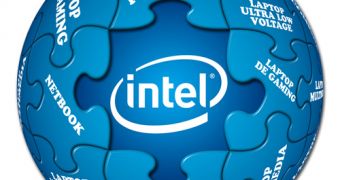For decades, Intel did just about anything to undercut its main competitor for the x86 market. There’s no denying that x86 is Intel’s invention and that AMD wouldn’t have gotten an x86 license in the first place, had it not been for IBM.
The American company feared exactly this kind of monopoly.
IBM knew that its PC line of products would be a great success and it feared that if Intel were its main supplier of x86 processors, Intel could later on practically charge IBM whatever amount of money they desired.
IBM straight-on told Intel that if they didn’t license the x86 ISA to AMD so that the Texas CPU maker could compete with Intel on providing IBM with x86 processors, IBM would implement another architecture in their PC concept.
It’s a strange way to acquire a license, but it happened.
Intel rarely licensed the x86 instruction set. Besides AMD, the only other holders of an x86 license are VIA, IBM, UMC and NEC.
AMD has been a thorn in Intel’s backside, and the American-Israeli giant did everything it could to simply make computer manufacturers not build products using AMD processors and make it that customers don’t even hear about AMD at all.
Intel had two main strategies.
The first was the “rebate spin.” Practically, OEMs would buy Intel x86 processors and then, if they didn’t sell AMD-based products, they would receive important rebates from Intel.
Back in the days of DELL-Intel exclusivity of the Pentium 4 era, DELL would actually post losses, had it not been for Intel’s important rebates and marketing funds.
The second strategy was the “marketing spin.” Practically, if a computer manufacturer advertised a product based on an Intel processor, Intel would require them to play the “Intel jingle” at the end of their commercial clip.
For every advertising clip that featured the “Intel jingle,” the processor giant would practically cover the ad expenses by itself.
This way, Intel achieved many goals at the same time.
The Intel brand was gaining very good popularity among the end-users and the OEM was tempted not to advertise any system but Intel-based products, as this advertising was much more affordable – if not downright free.
The third goal was that this way AMD remained practically unknown for the customer as a competing alternative, because if an OEM advertised AMD-based products, it would lose all the Intel rebates, marketing money and it would practically have to sustain and pay for its own advertising.
It’s quite amazing how Intel is allowed to not pay a fine for almost three years in a row. It is even more astonishing that this is a $1.45 billion fine, and that the mountain of evidence has been available for everybody to see for the last two decades.
On the other hand, the irony might spell that it is good to see that EU is good and tender with these oligarchic corporations and that democracy prevails in the corporatocracy-driven world, while the customers fill Intel’s pockets, not knowing that the affordable alternative even exists.
For readers that don’t know, “corporatocracy” is a term coined in the autobiographical book written by John Perkins and published in 2004.
The book is called 'Confessions of an Economic Hitman' and it defines “corporatocracy” as a country where the authorities are lobbied (plain bribed) by the corporations to issue laws and regulations that serve the corporations and bring no benefit to the citizen or even hurt his interests.

 14 DAY TRIAL //
14 DAY TRIAL //